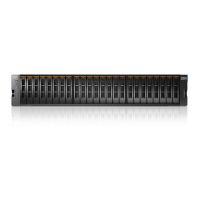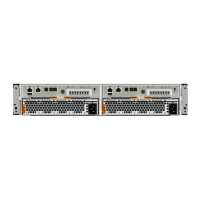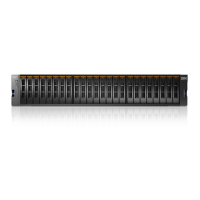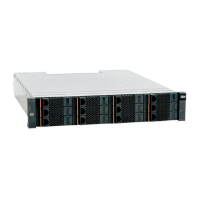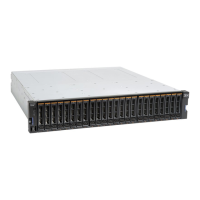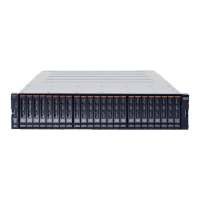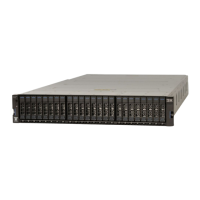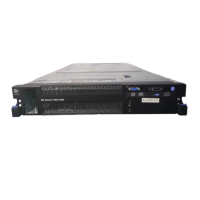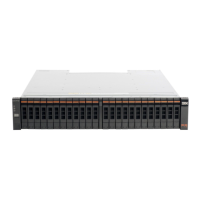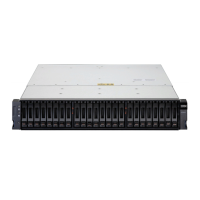508 Implementing the IBM Storwize V5000 Gen2 with IBM Spectrum Virtualize V8.1
10.3.12 Thin provisioned FlashCopy
FlashCopy source and target volumes can be thin-provisioned.
Source or target thin-provisioned
The most common configuration is a fully allocated source and a thin-provisioned target. By
using this configuration, the target uses a smaller amount of real storage than the source.
With this configuration, use the NOCOPY (background copy rate = 0%) option only. Although the
COPY option is supported, this option creates a fully allocated target, which defeats the
purpose of thin provisioning.
Source and target thin-provisioned
When the source and target volumes are thin-provisioned, only the data that is allocated to
the source is copied to the target. In this configuration, the background copy option has
no effect.
Thin-provisioned incremental FlashCopy
The implementation of thin-provisioned volumes does not preclude the use of incremental
FlashCopy on the same volumes. It does not make sense to have a fully allocated source
volume and then use incremental FlashCopy (which is always a full copy the first time) to copy
this fully allocated source volume to a thin-provisioned target volume. However, this action is
not prohibited.
Consider the following optional configurations:
A thin-provisioned source volume can be copied incrementally by using FlashCopy to a
thin-provisioned target volume. Whenever the FlashCopy is performed, only data that was
modified is recopied to the target. If space is allocated on the target because of I/O to the
target volume, this space is not reclaimed with subsequent FlashCopy operations.
A fully allocated source volume can be copied incrementally by using FlashCopy to
another fully allocated volume at the same time as it is being copied to multiple
thin-provisioned targets (taken at separate points in time). By using this combination, a
single full backup can be kept for recovery purposes, and the backup workload is
separated from the production workload. At the same time, older thin-provisioned backups
can be retained.
10.3.13 Background copy
With FlashCopy background copy enabled, the source volume data is copied to the
corresponding target volume. With the FlashCopy background copy disabled, only data that
changed on the source volume is copied to the target volume.
The benefit of using a FlashCopy mapping with background copy enabled is that the target
volume becomes a real clone (independent from the source volume) of the FlashCopy
mapping source volume after the copy is complete. When the background copy function is not
performed, the target volume remains a valid copy of the source data only while the
FlashCopy mapping remains in place.
Performance: The best performance is obtained when the grain size of the
thin-provisioned volume is the same as the grain size of the FlashCopy mapping.
